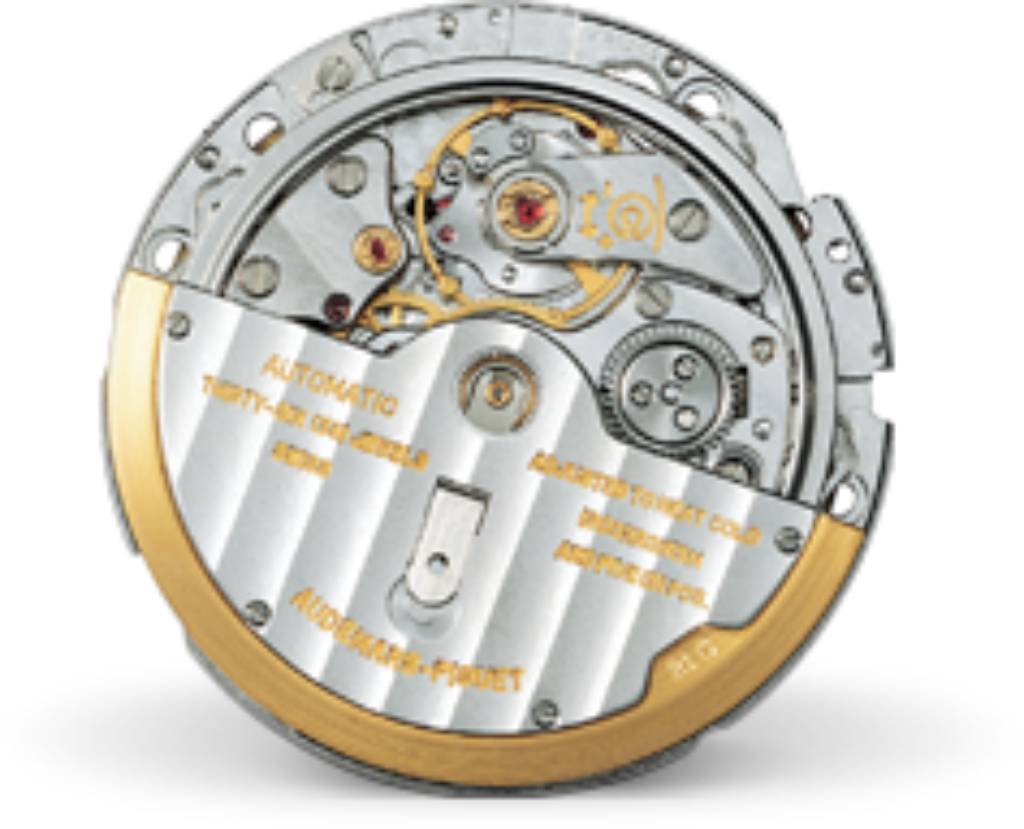Cal. 2120 is an ultra-thin automatic movement from Audemars Piguet, developed by Jaeger-LeCoultre and introduced in 1967. Audemars Piguet continues to rely on Cal. 2120 and the similar Cal. 2121 as of 2019.
Jaeger-LeCoultre developed their Cal. 820 for high-end clients, Audemars Piguet, Patek Philippe, and Vacheron Constantin. Although given a JLC movement number, it was never used by the parent company. Each company decorated and finished their own movement and assigned it their own movement number. Patek Philippe stopped using the movement in the 1980s, and Jaeger-LeCoultre ceded the rights to Vacheron Constantin and Audemars Piguet when they became part of Richemont in 2000.
Cal. 2120 achieves its remarkable thin profile thanks to some innovative features. The rotor rides on four peripheral ruby bearings or runners rather than central ball bearings. The mainspring barrel is said to be “flying” because it is anchored only on one side.
When it was first delivered in 1967, Cal. 2120 was equipped with a Patek Philippe-style Gyromax balance and free-sprung flat hairspring. Later, Cal. 2120/1 was introduced with a Glucydur annular balance and more traditional regulator. Another development on this base was Cal. 2121, which adds a date mechanism and remains in production today.
Because it is a reliable and thin movement, it is the basis for many complicated movements.
- Audemars Piguet Cal. 2120/2802 – Perpetual calendar and equation of time
- Audemars Piguet Cal. 2120/2808 – Perpetual calendar and equation of time
- Audemars Piguet Cal. 2120QP – The world’s thinnest automatic perpetual calendar when introduced in 1978
- Audemars Piguet Cal. 2121 – Automatic with date
- Audemars Piguet Cal. 2122 – Automatic with date and center seconds
- Audemars Piguet Cal. 5122 – Automatic with date
Audemars Piguet still uses Cal. 2120 as of 2019:
- Audemars Piguet Jules Audemars Extra-Thin, Ref. 15180
- Audemars Piguet Tradition Extra-Thin, Ref. 15160, 15337
- Audemars Piguet Royal Oak Tuxedo, Ref. 15154
